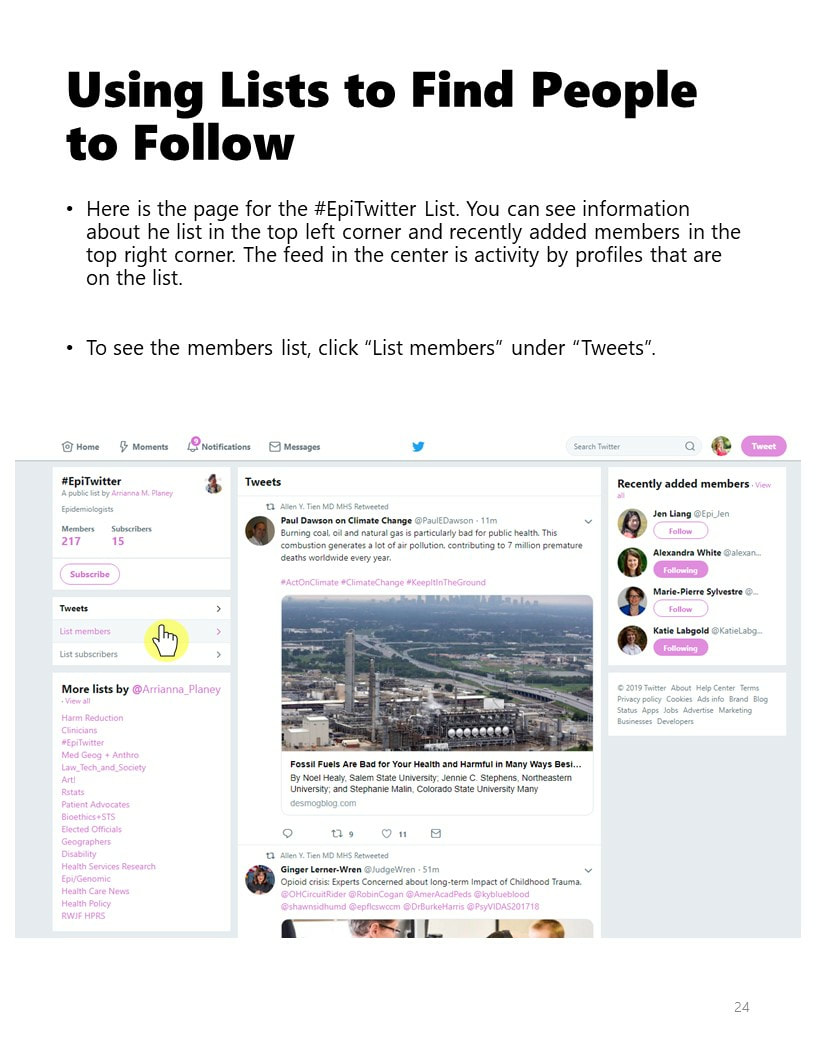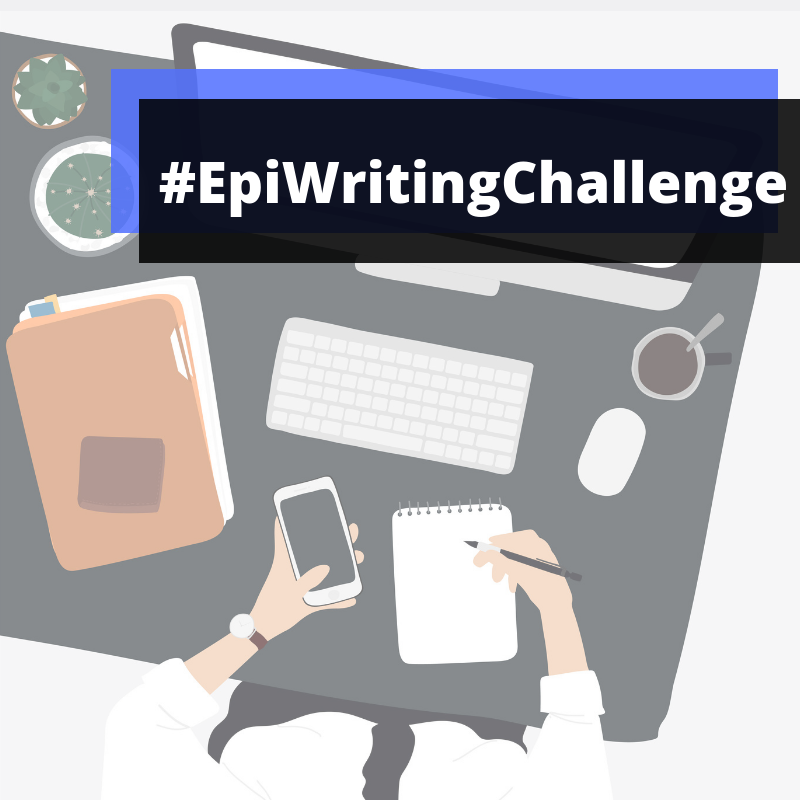|
I gave a seminar just last week in my department about professional Twitter. Science communication has expanded to include Twitter, and social media is not longer relegated to personal life. What's the difference between professional Twitter and non-professional Twitter? It's not a different site, it's just having an account for a different purpose. Read more to read what I have to say about should you or shouldn't you; key aspects of a professional Twitter; benefits of professional Twitter; and finally - a free download of my guide to setting up your professional Twitter. For example - if you started your Twitter account in high school or college, it was more than likely for personal purposes. You might have used it to follow the news, whether popular or standard, and interact with your friends and followers. Your handle (username) might not be the most professional choice, like switching from your very first email address to your "grown-up one". [email protected] ---> [email protected] If you're current handle is NinjaTurtleFanatic, you may want to make a change. Switch your profile to private if you don't delete it all together. Then create a new page from the ground up. If your current handle is already professional, like @FirstNameLastName but you've been using it for personal purposes, you can use an online program to delete all of your tweets and start over. If you're personal tweets aren't that concerning, then just start tweeting professionally. should you or shouldn't you?The answer to this question is up to you! Twitter is a great platform for sharing information - articles, thoughts, ideas. You can interact with your followers with comments, threads, and polls. You can share articles you find interesting, share your blog posts, or simply share information from other venues. These aspects of Twitter stand in contrast to other social media platforms, namely Instagram. Instagram is photo-oriented. If the content you share is primarily image related, Instagram is the way to go. You can share a good amount of content in the caption of your photos, but ultimately your photos are telling the story. Twitter might sound a lot like Facebook to you. The big difference here is that Facebook has become nebulous, and while you can create professional pages, and many people do have one (though it is not their primary venue), the audience isn't as strong. When people log in to Twitter professionally, they're ready to interact in that role. Most of the time when people log in to Facebook, it's in a personal social aspect. So, after thinking about the differences and uses of professional Twitter, the last question you have to ask yourself - do you have the time? If incorporating social media and communication into your professional life is important to you, than you'll make the time. If it's not, it will seem like just another time suck. Having a professional Twitter shouldn't be a chore. There are countless uses and benefits of it, and you can use it as much or as little as works for you. You may use it to share your blog posts or LinkedIn articles, to write original content, or you may just retweet stories others have posted. benefits of professional twitter1. Engage with thought leaders in your field. On Twitter, the traditional hierarchy is flattened. Students engage with senior faculty and vice versa, with astounding implications for reducing imposter syndrome. 2. Stay up-to-date. Just like you can use Twitter as a news curator, you can follow organizations and journals related to your field to stay up-to-date. 3. Participate in discussion. From journal clubs to tweetorials and general discussion threads, you can expand your knowledge on some topics and share your knowledge on others, while meeting peers along the way. Many cross-institution collaborations have began on Twitter! 4. Talk about important topics. Topics often absent from our everyday conversations - like bias, discrimination, mental health, and many other important topics - are discussions on Twitter. We often see these topics addressed in op-eds and scandalous headlines. 5. Learn about new resources. You'll learn about new websites, new books, new resources, new methods, new ideas in your field. It's like Amazon recommendations but related to your intellectual interests! 6. Improve writing and communication skills. 240 characters isn't a lot! So what you choose to say must be concise. key aspects of a professional twitter1. A professional and recognizable handle The example above is for someone with a PhD. If you're name is rather common, you can add your degree to your handle - JohnDoePhD or JohnDoeMD, etc. or you can tag on a keyword. I'm in epidemiology, and some of my colleagues have tacked _epi on to their handle. JohnDoe_Epi If you run a company or blog, creating a Twitter with that name as the handle is your best bet. While you can edit your display name, your handle is what is most searchable. Even if you have John Doe, PhD as your display name but still have @NinjaTurtleFanatic as your handle, it'll be difficult for people to find you. Furthermore, when people tag you in posts, it's your handle that's displayed not your display name. 2. professional and recognizable headshot Upload a square photo measuring 400 x 400 pixels. When displayed smaller, like next to your tweets, it will be 200 x 200 pixels. What's the implication? You want a headshot to maximize recognition. Anything else will be difficult to see. When someone searches your name, your headshot is one of the things that makes them know that hey, that profile is you! Many graduate schools offer 1 or 2 days a year where a photographer comes in to do professional headshots at a very reduced price (or even for free). Your department may also do headshots as a way of documenting their members. Request a full-resolution version and then compress it smaller for use on Twitter. If you don't upload a photo, the default mysterious gray man photo is used. It does not build trust. So upload a photo! Want to know how I got my headshots done? I logged on to www.thumbtack.com and put in a description of what I wanted and my estimated budget. Photographers in my area then bid on my job. Doing this was so much easier than reaching out to photographers via their website found on a Google search and finding out they're not in my price range or not interested or available in doing the job. For about $200, I had a handful of different shots done outdoors in different outfits and was absolutely blown away. Highly recommend! 3. Bio and webpage Writing a bio can be both easy and difficult. Looking at examples of others in your field can help. Overall, you want people to know who you are and what you do, and how you see yourself. You can include hashtags and @mentions in your bio, as well as shortened links. Answer the following questions to brainstorm some possibilities: - what do you do for a living? - how would you describe your job? - where do you work? - how would you describe your personal roles? - how would you describe your outlook? - what other roles do you fill? Below are some real examples of Twitter accounts in epidemiology, interior design, nutrition and dietetics, and graduate studies. setting up your professional TwitterReady to get started? You can download the most updated version of my guide for Setting Up Your Professional Twitter from my github page here: bdebarmore.xyz/set-up-twitter The pictures below are some screenshots so you can see what you get.
0 Comments
Your comment will be posted after it is approved.
Leave a Reply. |
popular postsLike what you read?
categories
All
archives
July 2024
This website uses marketing and tracking technologies. Opting out of this will opt you out of all cookies, except for those needed to run the website. Note that some products may not work as well without tracking cookies. Opt Out of Cookies |



















 RSS Feed
RSS Feed